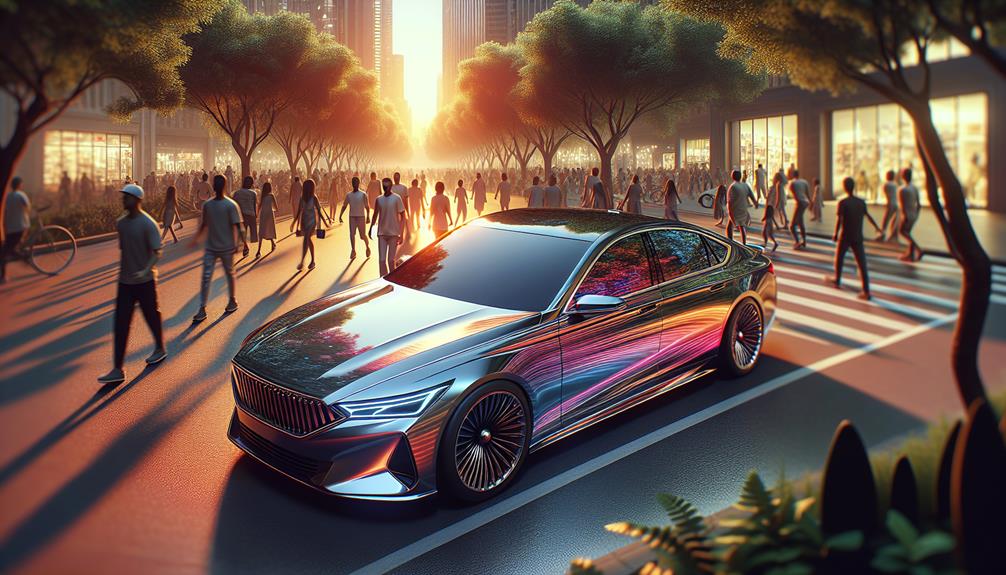
Dyed window tint is not merely a cosmetic upgrade for vehicle enthusiasts but a prudent investment in the longevity and efficiency of your automobile. By blocking up to 99% of harmful ultraviolet rays, dyed tinting significantly mitigates the risk of upholstery fading and plastic degradation within your car’s interior. Furthermore, it aids in maintaining cooler cabin temperatures during hot weather, which can reduce reliance on air conditioning and thus, improve fuel efficiency. Additionally, incorporating auto glass tinting enhances these benefits by providing an extra layer of protection and privacy for your vehicle. However, the application process requires precision to avoid bubbling and peeling, factors that can detract from both its functionality and aesthetic. To ensure optimal performance and durability from dyed window tint, one must consider both the quality of the film and the expertise of the installer. What remains underappreciated, however, is how these tints can be integrated into the broader maintenance and care strategy of your vehicle, a topic worthy of exploration.
Benefits of Dyed Window Tint
Dyed window tint offers several benefits, including enhanced privacy, reduced interior fading, and improved comfort by blocking harmful UV rays and reducing solar heat gain. When applied to your vehicle, dyed window tint creates a barrier that diminishes the visible light allowed into the interior, which enhances privacy for you and your passengers. Fellow enthusiasts often appreciate the sense of exclusivity and personal space this modification provides.
Moreover, dyed window tint plays a crucial role in protecting the interior of your car from the sun’s damaging effects. Continuous exposure to UV rays can cause the upholstery, dashboards, and other surfaces to fade prematurely, but the tint’s protective layer significantly reduces this risk. This preservation of the car’s interior not only maintains the aesthetic appeal but also supports the vehicle’s resale value, a point of pride and practical benefit for any car owner.
Additionally, by blocking a substantial amount of solar heat, this tint helps maintain cooler interior temperatures during hot days. This reduction in heat gain results in less reliance on air conditioning, which can lead to lower fuel consumption and, consequently, operational savings.
Embracing dyed window tint is not only a smart investment but also a commitment to maintaining the integrity and comfort of your vehicle within your community.
Installation and Maintenance Tips
Installing dyed window tint correctly is crucial to ensure maximum effectiveness and longevity of the film. Start by thoroughly cleaning the windows to remove any dust, dirt, or residues. Any debris left on the window can result in bubbles and imperfections that diminish both the appearance and functionality of your tint. Use a low-lint cloth and a suitable cleaning solution that won’t leave streaks or residues.
Once the windows are clean, carefully measure and cut the film to size, allowing a little extra on all sides for precise adjustments. When applying the tint, use a squeegee to smooth out the film and eliminate any air bubbles. Always start from the center and work your way outward to ensure a flawless finish. It’s often best to have this done by a professional to avoid costly mistakes.
For maintenance, clean your tinted windows with a soft cloth and a mild soap solution. Avoid using ammonia-based products as they can degrade the film over time. Regularly check for any peeling or bubbling, and address these issues promptly to maintain the integrity of the film.
In conclusion, the adoption of dyed window tint transcends mere vehicular enhancement; it emerges as an indispensable guardian of automotive sanctity.
This modest investment metamorphoses into a bastion against the relentless assault of ultraviolet rays, while simultaneously fortifying privacy and reducing thermal ingress.
The resultant augmentation in vehicular longevity and aesthetic appeal positions dyed window tint and auto glass tinting not just as choices but as quintessential necessities for the discerning automobile enthusiast aiming to preserve and elevate their vehicular experience.